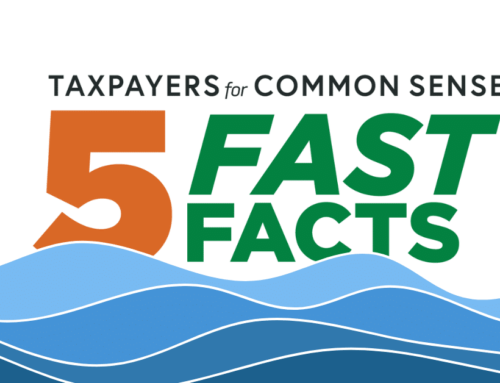No matter how hard lawmakers try to close their eyes, click their heels, and hope for the best, there are no magic wands. But that doesn’t stop them fiddling and flailing as the road spending burns through the Highway Trust Fund (HTF).
The Highway Trust Fund was created in 1956 to provide the nation’s surface transportation system with a stable and sustainable source of revenue. It’s supported largely by user fees in the form of the federal gas taxes. But with over spending, a gas tax unchanged since 1993, reduced driving levels, and more fuel efficient vehicles, the trust fund is running on fumes.
Instead of responsibly dealing with the issue, the President’s fiscal year 2015 budget taps a passel of offsets and gimmicks to fund the HTF over the next four years.
In his budget, the administration proposes a new $302 billion four-year surface transportation bill to fund existing grant programs and even create a few new ones for roads, transit, and railroads. But the HTF is only expected to take in $155 billion in that time frame. To make up the difference, the plan counts on $150 billion in revenue from “pro-growth tax reform.” What that might be is left up to the imagination. Even if the budget had laid out specific loophole-closing pay-fors, there’s little chance that tax reform is moving anywhere this year. Back in the real world, the HTF will be broke in five months.
Despite the whimsical accounting in the next four years, even the budget acknowledges that its’ trust fund fix is temporary – “the offset does not offer a permanent solution.” The budget request projects that by 2024, the HTF (which it reconstitutes and renames the Transportation Trust Fund) will be underfunded by $123 billion. But that’s also a fantasy. To get that number, the budget assumes that after splurging in fiscal years 2015-2019, transportation spending will drop to FY14 levels. If spending instead continues at the levels prescribed for the next four years, the HTF will be closer to $223 billion in debt.
Well, you get what you don’t pay for. Back in the 1990s, former Rep. Bud Shuster (R-PA), the father of the current House Transportation and Infrastructure Committee Chairman Bill Shuster (R-PA), was Chairman and successfully fought to take the trust fund “off budget.” This meant that the gas tax revenue could only be used on transportation projects. That was great in the years of surplus, but now that it is in a deficit situation, the HTF is barred from borrowing. It must have enough revenue in hand to make grants. So, if nothing changes, highway spending in the next few years will have to contract from around $60 billion annually to the $40 billion that the HTF takes in every year. But that won’t happen, and the money will come from somewhere. Because the President’s budget is using a pocketful of promises to pay for massive highway spending, you can bet that in the end, the money will come from the pockets of taxpayers through general revenue.
Instead, policymakers need to demonstrate real leadership and prioritize funding. Even absent additional revenue, the cash can be spent more wisely. For instance, in a study we released this week with Smart Growth America, we found that states were spending too much on new roads and not enough on repair. In the long run this means more and more roads in poor or fair condition and increased repair costs. Federal policymakers should target more funding to states that are concentrating on repair and less to states that are squandering too much cash on additional lane-miles.
But in the end the over-spending has to stop and policymakers have to align their spending desires with revenue realities. No more raiding the treasury, no more false promises to continue the road spending habit.







Get Social